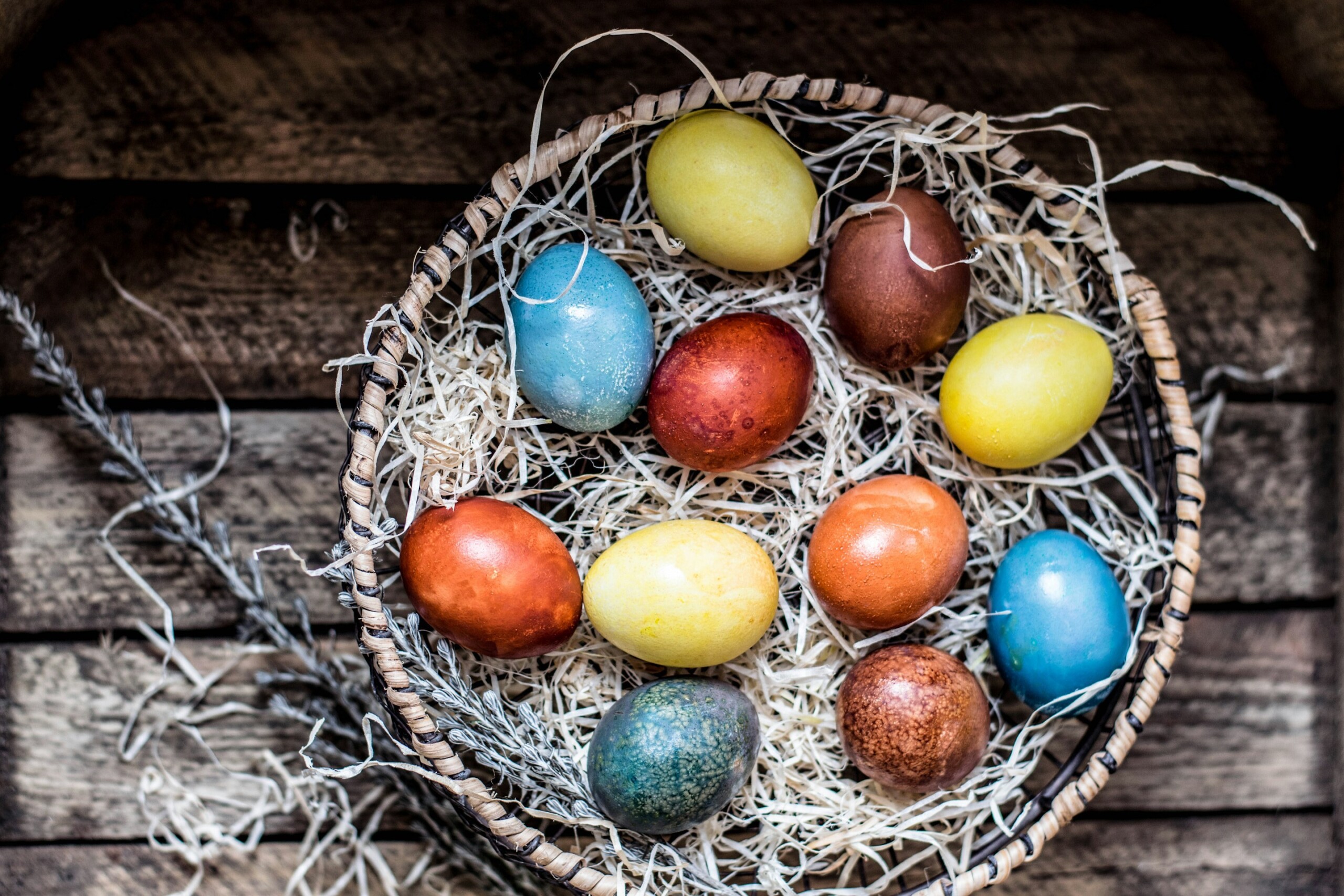
Natural Egg Dye Kit: How to Make One at Home
We are reader-supported. When you buy through links on our site, we may earn affiliate commission.
Are you prepping for an eco-friendly Easter? Dyeing eggs has been a tradition in many households for hundreds of years. Local ingredients used to be the norm for dyes, but convenience has taken over in the form of chemical dyes. However, has the convenience been worth it? Some say “no” and look to more wholesome alternatives. Here is a look at the world of food dyes and how to make a natural egg dye kit yourself.
Are Manufactured Dyes Harmful?
Unfortunately, part of the issue in determining the problems artificial food dyes cause is researchers don’t know how much people genuinely consume. The amounts used in production are hardly ever listed on nutrition labels and while “high chronic intake” was found adverse in a 2019 study, there isn’t a standard definition of how much too much is. Thus, there currently is no concrete evidence that the chemicals are harmful.
However, some studies have shown negative associations between manufactured dyes and human health. Red 3 is the most well-known offender, which many think can cause cancer. Others include Yellows 5 and 6, Blue 2 and Red 40 — these could damage colon cells, increase tumors, cause inflammatory bowel disease or asthma, or otherwise contain carcinogens people shouldn’t eat. Notably, the study displaying colon damage was only performed in Petri dishes. Beyond physical ailments, some dyes are being linked to neurological and behavioral issues in kids.
While these all sound scary, these findings come from isolated research that can’t definitively say artificial dyes are bad. Many more studies are necessary to determine the true effects of these additives. But plenty of people still choose to avoid them for one prominent reason — they don’t add anything to food besides color.
Dyes to Use In a Natural Egg Dye Kit
If you want to lower your carbon footprint, forego the fake stuff in favor of colors from the Earth this Easter. Here’s what you can use for each color, starting with the primary shades.
Red
While beets are a popular red dye supplement, red onions also provide a fair amount of the hue. Plus, you get the benefit of reusing a kitchen scrap most households would throw in the trash. Natural dyers and DIYers with compost piles, fear not — you need a fair amount of the skins, but not so many that you’ll run out of material anytime soon.
To make a red natural dye, start by boiling 14–16 red onion skins in 5 cups of water and 2 tablespoons of vinegar. Once the mixture has boiled with a cover on for half an hour, take it off the heat and let it sit uncovered for another 30 minutes.
Add the eggs in after straining the dye, returning the liquid to a boil and simmering for 8 minutes. When the time is up, you can remove the pot from the heat and let the eggs sit for at least an hour, or keep them in the dye overnight, depending on how dark you want them. Remove the eggs when the color is right and polish them with a bit of edible oil when they’re dry to bring out the vibrancy.
Yellow
Yellow is also easily achievable with turmeric. To avoid waste when you’re done dying eggs, start adding this spice to your diet. It has a host of purported health benefits, from decreasing inflammation to improving results on tests assessing kidney damage in renal disease patients.
Turning it into an egg dye is even more straightforward than the onion skins. All you need to do is place 1 tablespoon of turmeric powder in a bowl while you boil 2 cups of water. Pour the boiling water into the bowl, letting the turmeric steep for 30 minutes to two hours. When that time’s up, stir in 2 tablespoons of vinegar and add the eggs. They’ll be ready in four to 24 hours — soak longer for a stronger shade.
Blue
Did you think the blue dye would use blueberries? Think again — oddly enough, the best way to get blue in a natural egg dye kit is with red cabbage.
Like with the onion skins, boil one head of chopped red cabbage in 8 cups of water. Get the water boiling, then reduce the heat and let the veggie pieces soak for around an hour or until they start to look gray. After straining the cabbage out, add 6 tablespoons of vinegar and your eggs to the dye. Let them sit in the coloring for at least an hour or up to one full day.
Orange
Reach back into your spice cabinet to make an orange dye. For this recipe, boil 2 tablespoons of paprika and 2 cups of water for five minutes, adding in a tablespoon of vinegar when the time’s up. Follow the same process as with the yellow dye — let the eggs soak for at least four hours or up to 24.
Green
To get green, mix your turmeric and red cabbage-based dyes at a ratio that creates your desired shade. There isn’t a great way to get green onto eggshells naturally — you’ll have to rely on your color-mixing skills for the right levels.
Purple
For your purple dye, get some butterfly pea powder — which is also famous for its holistic properties — and simmer it in 2 quarts of water and 2 tablespoons of vinegar for half an hour. Then, strain the undissolved powder, let the dye cool for 20 minutes and add the eggs, letting them soak for at least an hour. When you remove them, they’ll be a beautiful dark blue.
You could stop there, but grab the kids for part two. Use a lemon wedge or lemon juice to wet the outside of the egg, which will cause the dark blue shade to turn purple. This happens because of the pH shift the butterfly pea flower experiences when the acidic lemon touches it. Little ones will be fighting to be the one who gets to make the eggs change color.
Create a Natural Egg Dye Kit at Home With Ease
Humans dyed things naturally for hundreds of years — it’s only recently the market made chemical dyes the go-to. Why not invest some time in going back to the past with a natural egg dye kit? By making your own colorings at home, you reduce your carbon footprint, unnecessary spending and food waste. Give it a go with the children this Easter.
Share on
Like what you read? Join other Environment.co readers!
Get the latest updates on our planet by subscribing to the Environment.co newsletter!
About the author
Rachel Lark
Rachel serves as the Assistant Editor of Environment.co. A true foodie and activist at heart, she loves covering topics ranging from veganism to off grid living.





